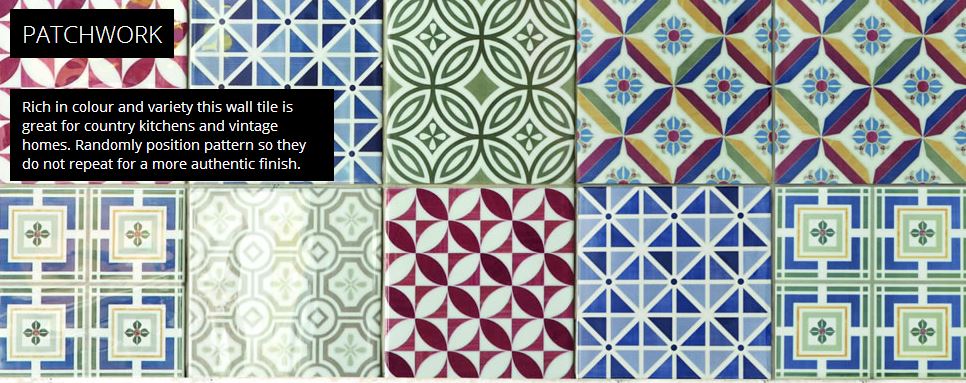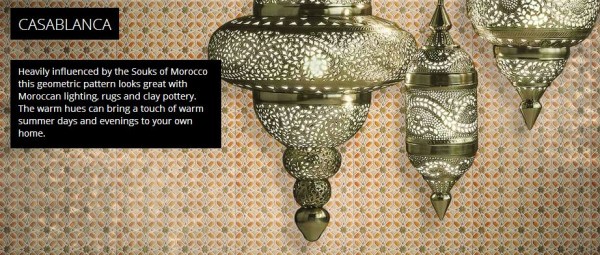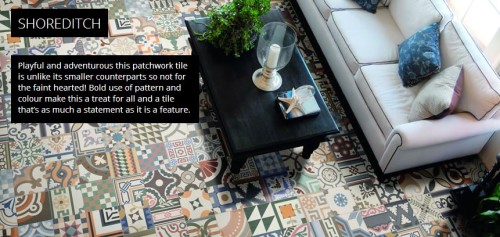Back in the eighties, floor tiles were undergoing something of a revolution. As production methods moved away from the ‘double fired ‘ system (or ‘bicottura’ where the clay body or ‘biscuit’ was fired first, before applying the glaze and then firing again) to the ‘single fired’ or ‘monocottura’ system, which simply means that the biscuit and glaze are fired together in one single firing.
The benefits of this system were firstly, energy-saving, and therefore cost saving – only one trip through the kiln instead of two. It also meant a much faster manufacturing process. Lastly, it allowed the formation of slightly harder materials, a tougher biscuit and also a more hard-wearing glaze. All of this was to be welcomed of course but this new process was not without its limitations.
Double firing, meant a lower temperature in the kiln for the second firing, i.e for the glaze. The new, single fired method employed a higher temperature and this had an impact on design. Up to this point elaborate patterns were the order of the day; we all remember the floors of the seventies with busy, repeat patterns, often comprised from 4 tiles to give the impression of a larger repeat motif but with the new technology came a new set of restrictions for designers. Gone were the patterns and in came plain glazes, the only interest coming from the degree to which the manufacturers could create shading or variation in the texture.
Some of these changes would no-doubt have happened anyway, purely as a result of evolving fashions and tastes and the new technology also allowed the development larger size formats. Then came the introduction of porcelain, taking ceramic tiles to new levels of technical sophistication and durability. But as the manufacturers would admit, early porcelain was aimed squarely at the commercial market.
So, for the next 2 decades or so we were treated to new, plainer, minimalist Germanic/Scandinavian styles for the most part. As the years went on the designs became more sophisticated, and mimicking natural materials such as stone became the ubiquitous goal of the tile manufacturers. This was fine, and a welcome change at the time, but it seems that in recent years there has been little development, and dare I say it, ceramic tiles have been in the doldrums a little, a trip to your local tile store in the last 10 years would have revealed very little in the way of exciting new designs. In fact, over the last 2 decades tiles have been somewhat overshadowed by the very material they sought to mimic – natural stone.
However, it seems to have come full circle now, is the British love affair with natural stone over? – I don’t think so, but the public are now much more familiar with stone, it is everywhere, in a wide range of colours, shapes and materials, as well as a very wide range of qualities. They are also much more informed about the issues of durability, maintenance and suitability of certain stones, indeed, looking back over the last 7 or 8 years of this blog, most of what I have written has addressed problems relating to the care and maintenance of natural stone.
Well the market is ready for a change and interior designers like Lesley Taylor (of www.lesleytaylor.co.uk and www.taylorsetc.co.uk ) have been looking for new inspirational designs and at last, technology is now, finally allowing more and more elaborate designs once again and so Lesley’s team have recently launched The Baked Tile Company (www.bakedtiles.co.uk) to breathe new life into the ceramic tiles market.
Baked offers new, exciting designs that are fresh and in-line with current trends. The patterned tile has returned and tiles just got exciting again.
Copyright Ian Taylor and The Tile and Stone Blog.co.uk, 2013. See copyright notice above.




Leave a Reply